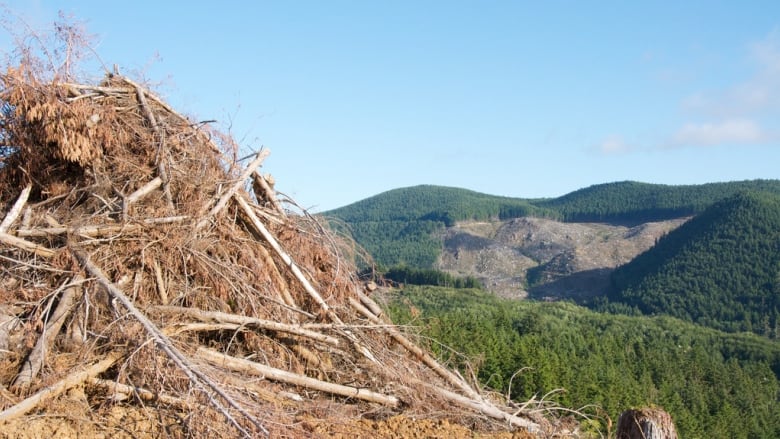How debris from logging and wildfires can benefit wildlife: UBC researcher
What were trying to do here is speed up the regeneration of the forest, says UBC biologist

A UBC biology professor saysforest management practices in B.C.should consider thebenefits of leaving wood debris from forest harvesting, insect outbreaks, and wildfires due to its potential to speed forest regeneration and improve wildlife habitat and biodiversity.
For nearly a dozen years, professor emeritus in biology and forestry Tom Sullivan says he's been investigating piles of wood debris around south-central B.C. and its effect on wildlife.
The Wildfire Act requires forestry companies to clean up logging debris within 30 months of the beginning of activity, but Sullivan says some of that debris could be left in the backcountry to encourage forest regeneration.
"The piles are viewed as a fire hazard, in our opinion a perceived fire hazard, but again you don't want to be leaving this material anywhere near interfaces, near communities where people live so we recommend that they are maintained in some locations in the backcountry," said Sullivan.
Preserving wildlife habitat
Sullivan says the clearcut harvesting can drive away small mammals that inhabit the forest floor, such as red-backed voles, which can take up to 50 years to reappear in the forests.
Along with other researchers, Sullivan studied the effect that large piles of woody debris in clearcut sites would have on the mouse-like voles, and found that the debris enhanced the abundance, reproduction, and survival of the red-backed voles.
Sullivan says these piles of woody debris can connect mature forests and riparian areas, thereby supporting a variety or wildlife, including small mammals such as mice and shrews.
Also supported are predators like weasels that feed upon rodents, and some larger animals that use the piles for resting and nesting during the year.
"If we can keep that species [red-backed voles]and others in these young forests through time, then I think we're on the path to restoring the habitat," said Sullivan.
"What we're trying to do here is speed up the regeneration of the forest, the succession of the forest after cutting."
Sullivan says some forestry companies have been supportive of the idea, but the Ministry of Forests needs to work on some new policies that incorporate this research into forest management.
With files from Daybreak South












_(720p).jpg)


 OFFICIAL HD MUSIC VIDEO.jpg)
.jpg)



























































































